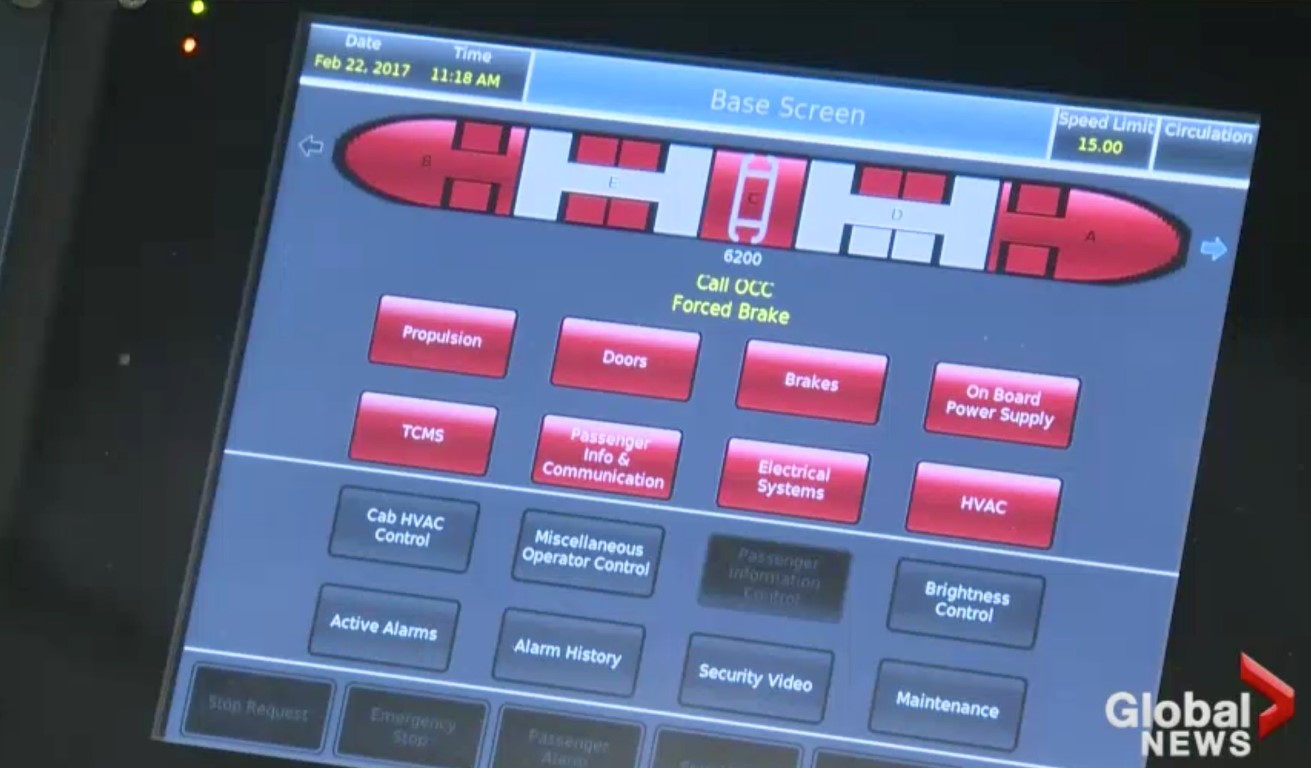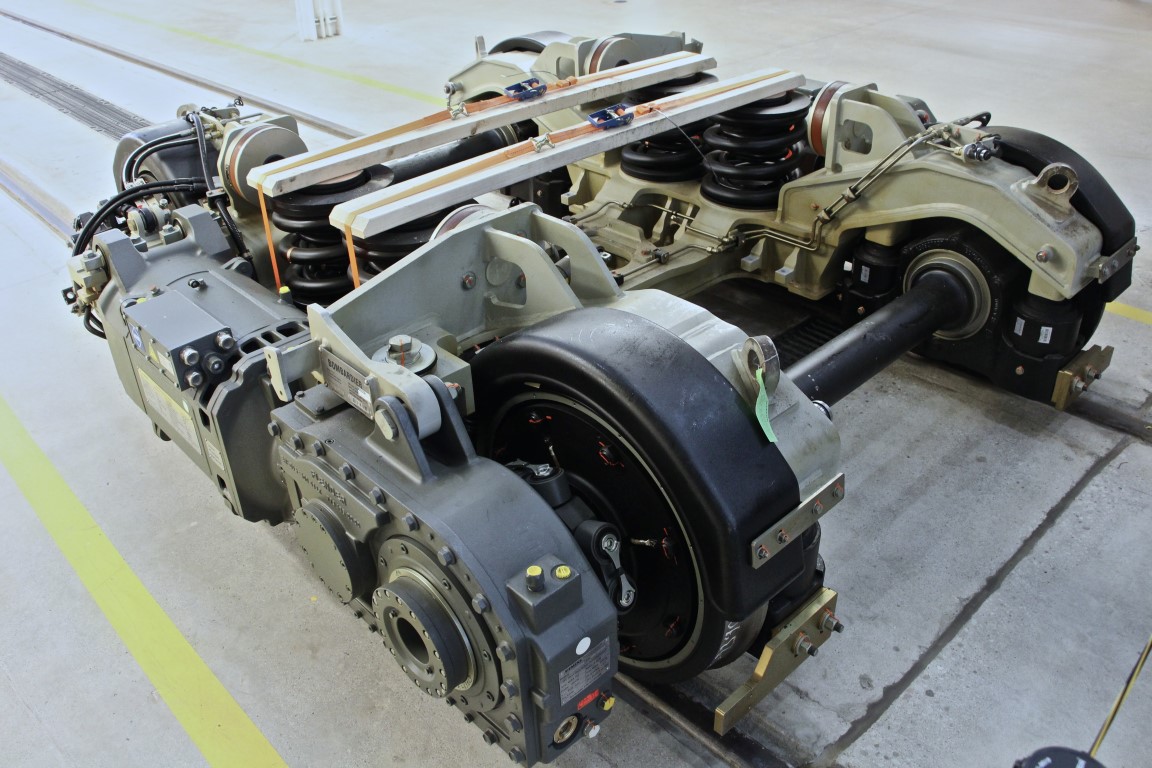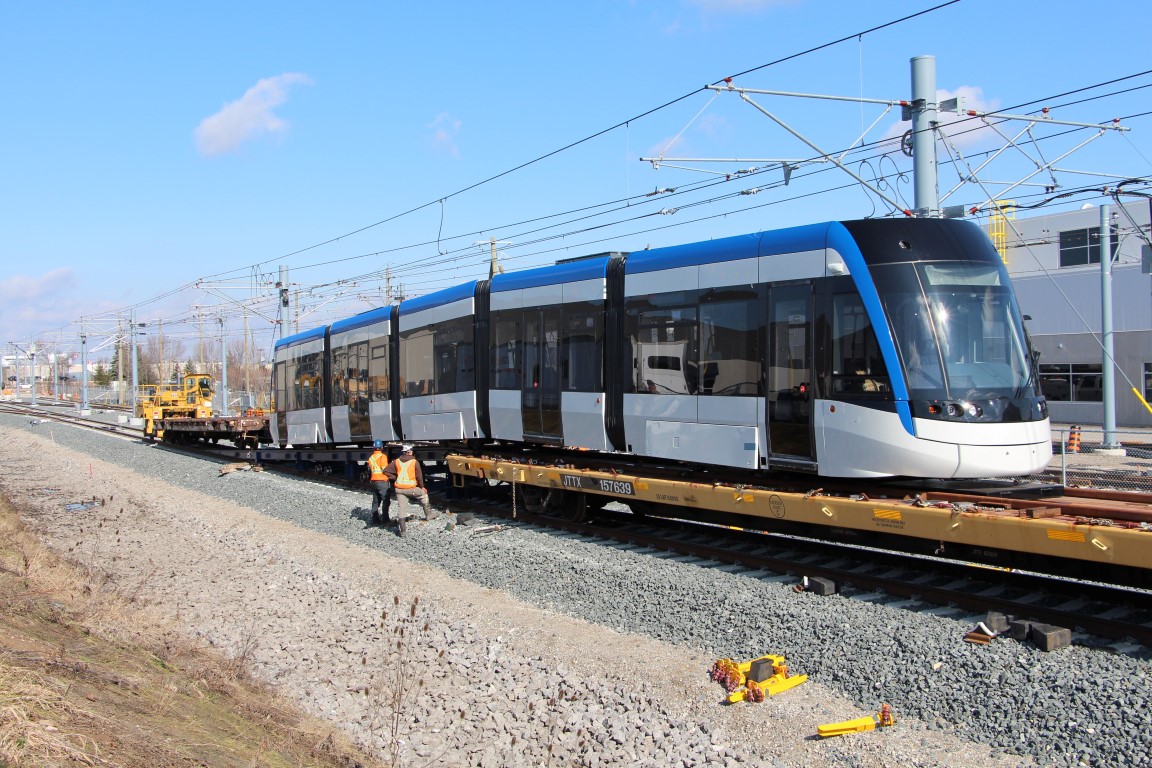Module order is A-D-C-E-B, with bogies in modules A, B, and C. Modules D and E are without wheels and supported by their neighbours. It is worth noting that this nomenclature is only valid for the 5-module variant; not the 3 or 7. In other words, you can't just benignly say "a C module is always a short, intermediate one with a bogie and no doors", because on the 3-module variant you'd have A-C-B, and C would be the same as a 5-module's D or E.

I don't know which end it's from, but the train is set up as a 3+2 configuration, where the two articulations between the first three modules are only permitted rotation in yaw, and the same goes for the articulation between the fourth and fifth module. The articulation between the third and fourth module is permitted to articulate in both Pitch and Yaw. Roll is not permitted on any joint, so the train is effectively a stiff log if you were to try and twist the first and fifth modules relative to one another, along an axis running the length of the train. This is why I'm very anxious to watch how the LRV's handle the complex curve at Benton/Charles SB. The bogies themselves have a limited amount of yaw (via rubber dampers) to the module above them, and are permitted some small amount of roll, through springs. They can also pitch. This makes the entire system kinematically "okay" in that it can theoretically navigate any geometry profile thrown at it, but it's not really perfect.

Bogie shot from the Leslie Barns Open House in Toronto, for their FLEXITY Outlook LRV's. You can see the bolsters (big bumpers) for permitting a little bit of Yaw between the bogie and module, as well as the springs for permitting Roll.
(I could geek out about LRV articulation and geometry for days. I have studied kinematics and geometry of roller coasters ever since I started riding them in the late 90's (it's the only reason I did!). I was curious about the engineering behind them and how they could take the curves, and after watching them I decided they were fun to ride, too. 500+ coasters later...)
I would have been able to answer your question about which modules had which points of articulation during the re-loading of 501 onto the flatcar, however, the stickers were all removed, so there were no identifying features that I could pick out to discern which was the "A" end and which was the "B" end. There is a side marker light which is to the left of the centre seam in the above images in the centre module, which I could have used as a fiducial, but I'm not sure if it's "mirrored" feature or "rotated" feature around the Z axis of that module. During loading or offloading, the sharp angles made at the start and end of the ramp make it easy to pick out where the Pitch articulation joint is, as shown below.


I don't think they will ever swap out a module on-site at Dutton. If a train gets hit by a car, and the damage is more than superficial, it'll likely go back to Bombardier for them to swap it out.
I don't know which end it's from, but the train is set up as a 3+2 configuration, where the two articulations between the first three modules are only permitted rotation in yaw, and the same goes for the articulation between the fourth and fifth module. The articulation between the third and fourth module is permitted to articulate in both Pitch and Yaw. Roll is not permitted on any joint, so the train is effectively a stiff log if you were to try and twist the first and fifth modules relative to one another, along an axis running the length of the train. This is why I'm very anxious to watch how the LRV's handle the complex curve at Benton/Charles SB. The bogies themselves have a limited amount of yaw (via rubber dampers) to the module above them, and are permitted some small amount of roll, through springs. They can also pitch. This makes the entire system kinematically "okay" in that it can theoretically navigate any geometry profile thrown at it, but it's not really perfect.
Bogie shot from the Leslie Barns Open House in Toronto, for their FLEXITY Outlook LRV's. You can see the bolsters (big bumpers) for permitting a little bit of Yaw between the bogie and module, as well as the springs for permitting Roll.
(I could geek out about LRV articulation and geometry for days. I have studied kinematics and geometry of roller coasters ever since I started riding them in the late 90's (it's the only reason I did!). I was curious about the engineering behind them and how they could take the curves, and after watching them I decided they were fun to ride, too. 500+ coasters later...)
I would have been able to answer your question about which modules had which points of articulation during the re-loading of 501 onto the flatcar, however, the stickers were all removed, so there were no identifying features that I could pick out to discern which was the "A" end and which was the "B" end. There is a side marker light which is to the left of the centre seam in the above images in the centre module, which I could have used as a fiducial, but I'm not sure if it's "mirrored" feature or "rotated" feature around the Z axis of that module. During loading or offloading, the sharp angles made at the start and end of the ramp make it easy to pick out where the Pitch articulation joint is, as shown below.
I don't think they will ever swap out a module on-site at Dutton. If a train gets hit by a car, and the damage is more than superficial, it'll likely go back to Bombardier for them to swap it out.



